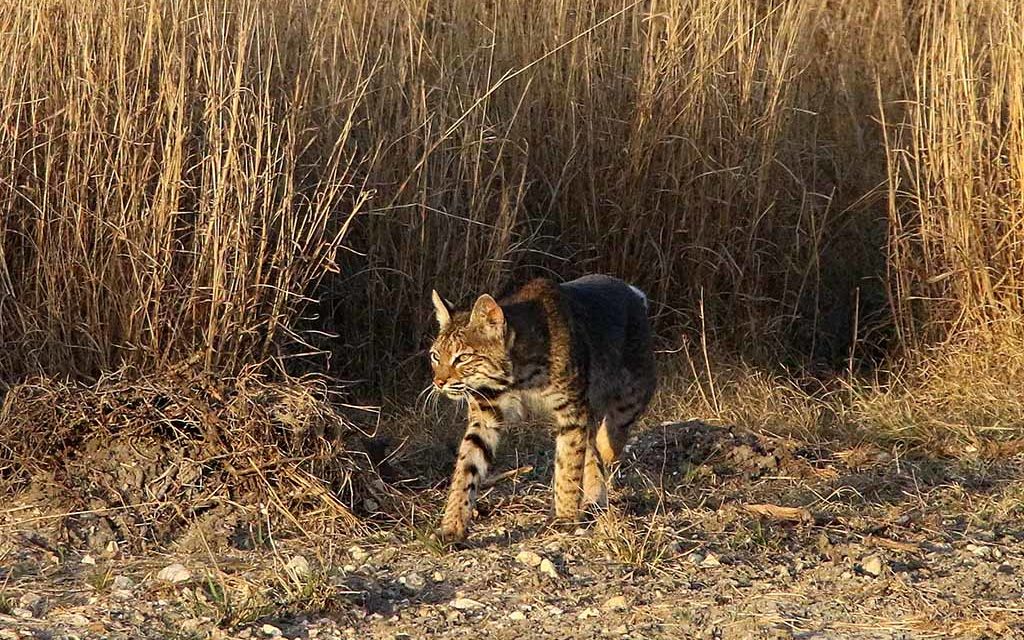by John Jefferson
I was in Beaumont last week giving a talk to a ladies’ group. My gracious hosts were Bill and Kelly Munro. Bill is the grandson of “Uncle Josh” Munro, the man who introduced me to the tangles and treasures of the outdoors. Kelly and I were visiting over coffee when the conversation turned to Bobcats.
She showed me pictures from their McMullin County ranch. The accompanying photo resulted. It reminded me of an encounter that could have ended badly. Thankfully, it didn’t.
Al Brothers, legendary wildlife biologist and manager of the Zachry Ranches in South Texas, had invited several biologist friends to help him reduce the doe over-population. They let me accompany them.
The Zachry family was uncharacteristically away from the ranch the opening weekend of the South Texas deer season. Brothers had permission to host the hunt.
The early November weather was typically warm. Al drove me to a small, stacked mesquite-limb, ground blind beside a sendero through the brush. I liked that. It was natural looking, although lacking an overhead view of the brush. But it intimately exposed its occupant to native wildlife. Like rattlesnakes.
That’s just part of doing business in a rich wildlife region. Al helped me unload my cache of equipment — a rifle, camera, telephoto lens, tripod, and a varmint call. He was amused.
I scanned the sendero for an hour before the warmth took effect. Sitting in the sun can make one drowsy. Leaning against the limbs, I dozed off. Sometime later, I awoke with the sun lower and in my eyes. Looking around, the sun coming through a large clump of buffelgrass almost looked like there was a critter behind the grass evaluating me. It began to take form.
It WAS a BOBCAT! I slowly glassed it for verification. I laid my rifle – a Ruger .250 Savage – beside me and slowly picked up my camera. I don’t remember why, but I wanted to change film. Using a Nikon F-3 film camera with an attached motor drive, I activated the film rewind switch to take up the film and replace it with a better film for the conditions. Then, something unexpected occurred.
Instead of being spooked by the whirring of the motor drive, the cat bolted toward me!
The film had partially rewound. My rifle was on the ground. The feline was quickly covering the 60-foot distance between us. I waved one hand and yelled! The cat jerked to a stop fifteen feet away. It must have thought: “A prey animal with a voice? And a hand? What the …?”
I picked up the camera and pointed it at the bewildered bobcat, hoping to get at least a double-exposed image over a previous picture that could be sacrificed. That motion convinced the would-be predator of danger. It spun and rapidly retreated faster than it had arrived.
I sat there, my heart beating frantically. Only one blurry picture; no venison …but thankfully no scratches. And another tale to tell.
It was just hungry.
JJ





